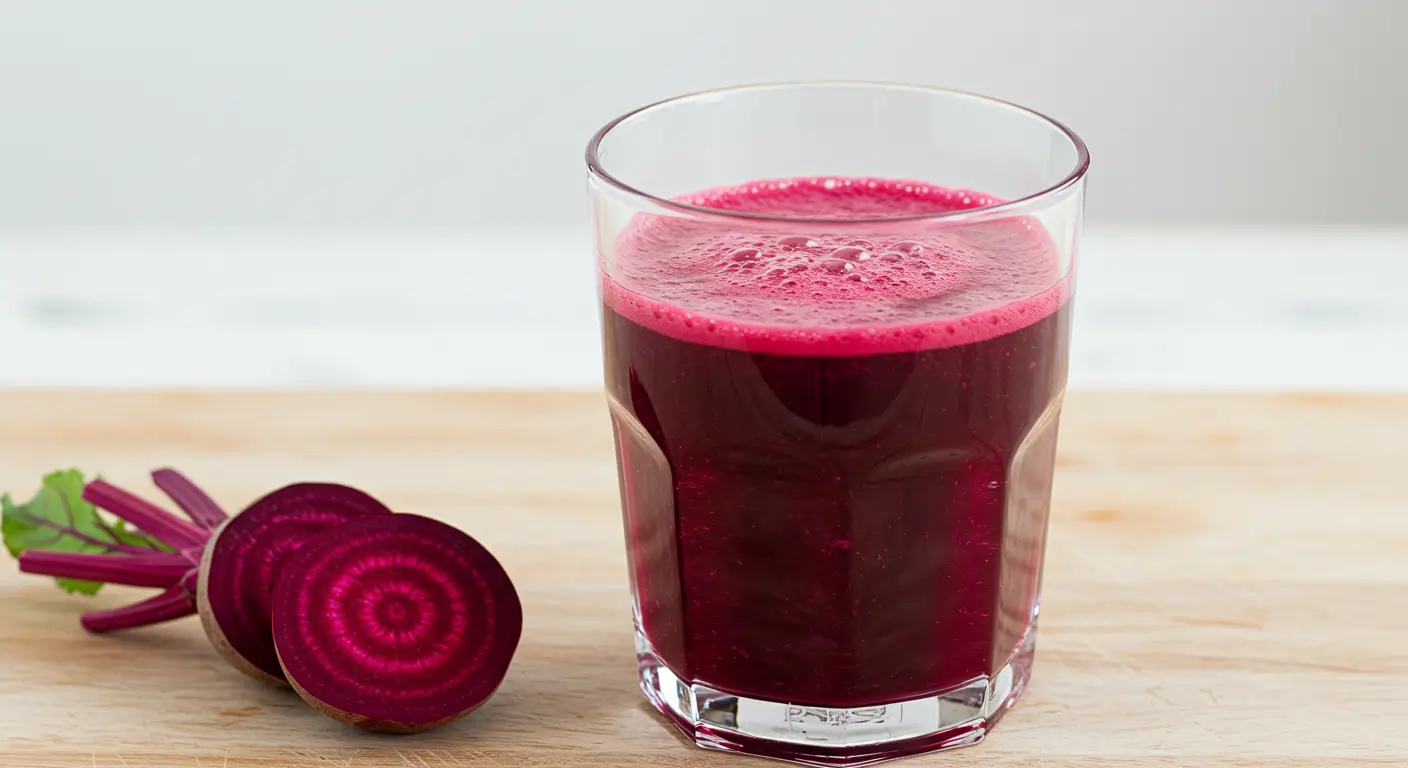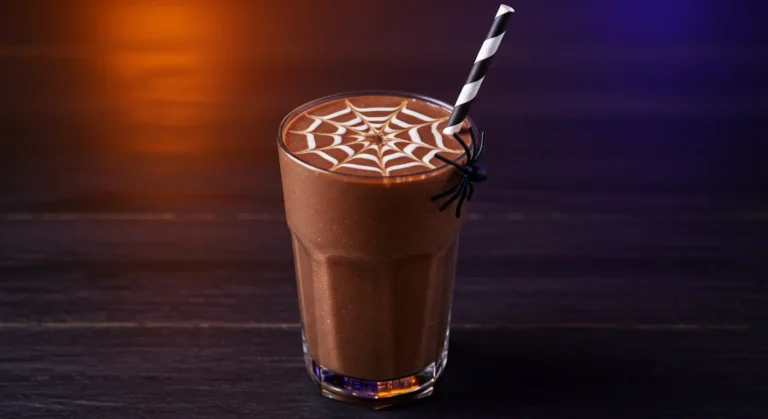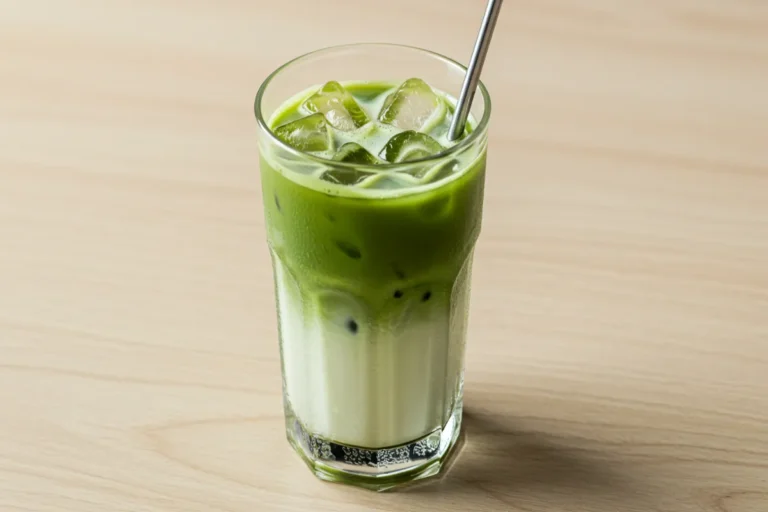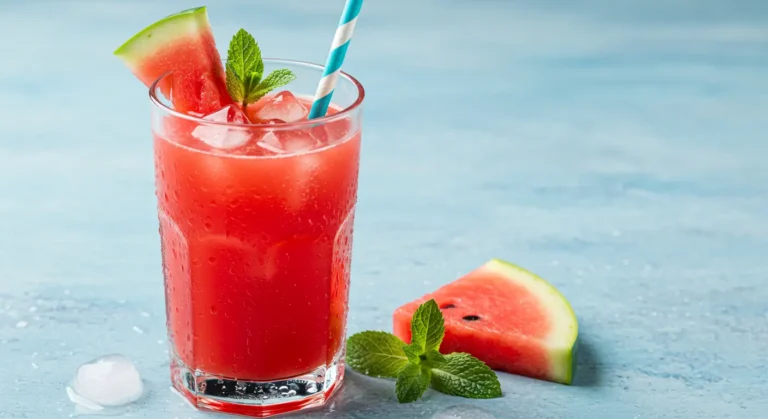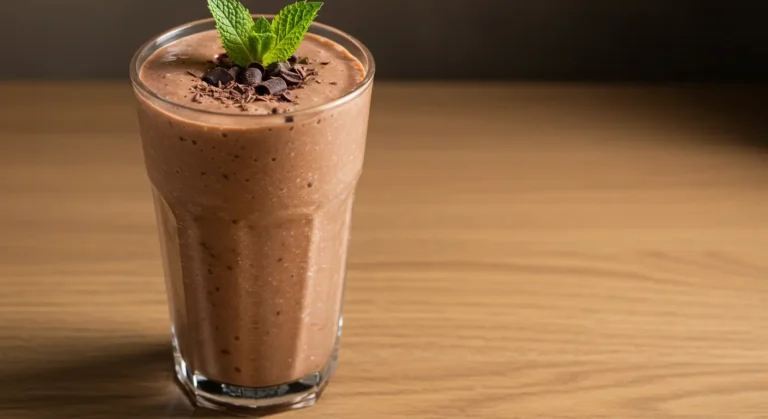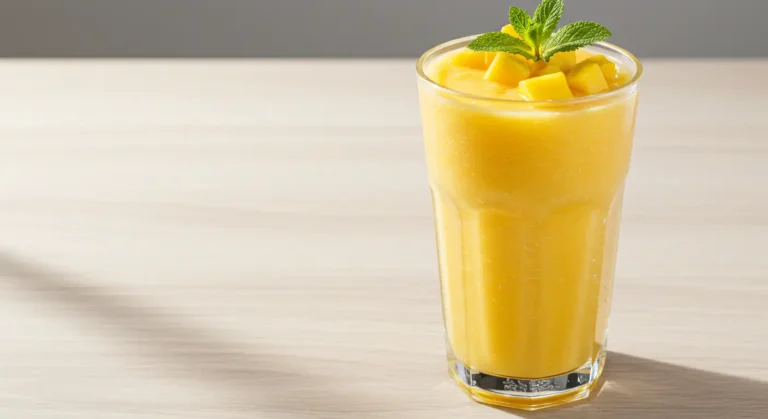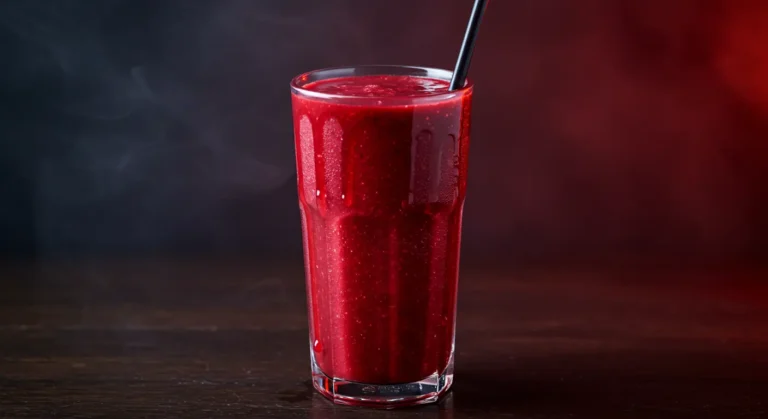Beet Juice Recipe: 3 Ingredients, Big Benefits
How many superfoods can be transformed into a delicious, vibrant drink in under 10 minutes while delivering more than a dozen essential nutrients to your body? The humble beet, often overlooked in produce aisles, contains more nitrates than almost any other vegetable, potentially lowering blood pressure in just hours after consumption. This simple beet juice recipe harnesses these remarkable benefits in a quick, delicious drink that anyone can make. Whether you’re an athlete looking for performance gains, someone managing blood pressure concerns, or simply wanting a nutrient-dense addition to your diet, this three-ingredient beet juice recipe offers an accessible way to enjoy this powerful root vegetable.
Table of Contents
Ingredients List
For this simple yet powerful beet juice recipe, you’ll need just three core ingredients:
- 2 medium beets (approximately 8 ounces or 225g total), preferably organic, with their ruby-red flesh that delivers that signature earthy sweetness
- 1 medium apple, adding natural sweetness that balances the earthy notes of the beets
- 1 inch piece of fresh ginger root, providing a warming, spicy kick that elevates the entire drink
Optional add-ins to enhance flavor and benefits:
- 1/2 lemon (with peel removed), which brightens the flavor profile and adds vitamin C
- 1 medium carrot, offering additional sweetness and beta-carotene
- 1 small cucumber, creating a refreshing quality and adding hydration
- 1 tablespoon fresh lemon juice, for brightness without the pulp
- A pinch of black pepper, which can enhance nutrient absorption
- 1-2 teaspoons honey or maple syrup, if additional sweetness is desired (though the apple typically provides enough)
Timing
Preparation time: 5 minutes (washing and cutting ingredients) Processing time: 2 minutes (actual juicing) Total time: 7 minutes
This beet juice recipe requires only 7 minutes from start to finish.
Step-by-Step Instructions
Step 1: Prepare Your Beets
Wash your beets thoroughly under cold running water, using a vegetable brush to remove any dirt or soil. Trim off the tops and bottoms, then cut the beets into quarters or smaller chunks that will fit through your juicer’s feed tube.
Step 2: Prepare Supporting Ingredients
Wash the apple and cut it into quarters, removing the core and seeds. For the ginger, a peeler isn’t strictly necessary—simply scrub it clean under water. Cut the ginger into smaller pieces to help your juicer process it more efficiently.
Step 3: Set Up Your Juicer
Position your juicer on a clean, stable surface and place the juice collector and pulp container in their proper positions. If you don’t have a juicer, don’t worry—I’ll provide blender instructions in a later section.
Step 4: Juice Your Ingredients
Turn on your juicer and alternately feed the beet chunks, apple pieces, and ginger through the feed tube. Starting with softer ingredients (apple) and finishing with harder ones (beets) can help extract maximum juice.
Step 5: Mix and Adjust
Once all ingredients are processed, give your juice a quick stir to ensure even distribution of the flavors. Taste your vibrant creation and adjust as needed—add a squeeze of lemon juice for brightness or a touch of honey if you prefer additional sweetness.
Step 6: Serve Immediately
Pour your freshly made beet juice into a glass and consume immediately to enjoy maximum nutritional benefits. The enzymes and nutrients are most potent right after juicing.
Nutritional Information
One serving of this beet juice recipe (approximately 8 ounces/240ml) contains:
- Calories: 115
- Carbohydrates: 27g
- Protein: 2g
- Fat: 0.5g
- Fiber: 1g (when using a blender method)
- Sugar: 21g (naturally occurring)
- Vitamin C: 12% of Daily Value
- Folate: 37% of Daily Value
- Potassium: 16% of Daily Value
- Iron: 6% of Daily Value
- Manganese: 24% of Daily Value
This beet juice recipe is particularly notable for its nitrate content, a single serving provides approximately 300-400mg of nitrates, the amount shown to improve athletic performance and support cardiovascular health.
Healthier Alternatives for the Beet Juice Recipe
While this beet juice recipe is already nutrient-dense, here are some modifications to tailor it to specific health goals:
Lower sugar option:
- Replace the apple with 1/4 of a green apple and add 1/2 cucumber for volume with less sugar
- Add a small handful of spinach, which won’t dramatically alter the flavor but adds nutrients
- Use a squeeze of lemon instead of additional fruits for flavor
Higher protein version:
- Blend the finished juice with 1/4 cup Greek yogurt for a smoother, protein-enhanced beverage
- Add 1 tablespoon of chia seeds and let sit for 10 minutes for added protein and omega-3 fatty acids
- Incorporate 1/2 scoop of unflavored or vanilla plant-based protein powder
Digestive support boost:
- Double the ginger content for enhanced digestive properties
- Add 1/4 teaspoon of turmeric and a pinch of black pepper for additional anti-inflammatory benefits
- Include 1 tablespoon of apple cider vinegar for probiotic properties
Heart health focus:
- Add 1 stalk of celery to enhance the natural nitrate content
- Include 1/4 avocado when blending for heart-healthy fats (note: this creates more of a smoothie texture)
- Incorporate 1 tablespoon of ground flaxseed for omega-3 fatty acids
These modifications allow you to customize the basic beet juice recipe to address specific health concerns or dietary preferences while maintaining the core benefits of the original recipe.
Serving Suggestions
Transform your basic beet juice recipe into an elevated experience with these creative serving ideas:
Morning Vitality Boost: Serve your beet juice in a tall, chilled glass alongside a protein-rich breakfast. The natural sugars and nitrates make this an ideal morning drink, potentially providing sustained energy throughout the day.
Pre-Workout Performance Enhancer: Consume your beet juice approximately 60-90 minutes before exercise. Research suggests this timing allows the nitrates to convert to nitric oxide, potentially enhancing oxygen delivery to muscles during your workout.
Wellness Elixir: Create a wellness flight by serving small portions of beet juice recipe alongside other functional juices like turmeric-orange or ginger-lemon for a comprehensive nutrient boost.
Brunch Mocktail: Serve in champagne flutes with a splash of sparkling water, a twist of lemon peel, and a sprig of fresh mint for an elegant, alcohol-free brunch option that will impress guests.
Seasonal Variations:
- Summer: Add 1/4 cup fresh watermelon chunks for a cooling effect
- Fall: Include a pinch of cinnamon and nutmeg for a harvest flavor profile
- Winter: Blend with 1/4 cup frozen cranberries for a holiday-appropriate adaptation
- Spring: Add a handful of fresh strawberries for a seasonal twist
For those new to beet juice, consider starting with a smaller serving (4 ounces) mixed with equal parts apple juice until your palate adjusts to the distinctive earthy flavor profile of beets.
Common Mistakes to Avoid
Mistake #1: Not properly cleaning the beets Beets grow in soil and can harbor dirt that affects flavor. Thoroughly scrub them under cold water before juicing. Research shows that properly cleaned produce can reduce potential contaminants by up to 98%.
Mistake #2: Using old, woody beets Fresh beets yield more juice and better flavor. Look for beets that feel firm and heavy for their size with smooth skin. The taproot (the skinny part extending from the bottom) should be intact, indicating freshness.
Mistake #3: Discarding the beet greens If your beets come with their leafy tops, don’t throw them away! They’re highly nutritious and can be juiced alongside the roots or saved for sautéing or adding to salads.
Mistake #4: Juicing everything at once Alternating harder and softer ingredients helps your juicer work more efficiently. Start with softer items like apple, followed by harder beets, to prevent clogging and maximize juice extraction.
Mistake #5: Expecting immediate results While some people report feeling energized immediately after drinking beet juice, the cardiovascular benefits typically require consistent consumption. Studies show that regular intake (2-3 times per week) provides more sustained benefits than one-time consumption.
Storing Tips for the Beet Juice Recipe
While this beet juice recipe is best consumed immediately after preparation to preserve its nutritional profile, sometimes storage is necessary for practical reasons:
Short-term storage (same day): Transfer your freshly made juice to an airtight glass container (mason jars work wonderfully) and fill to the very top to minimize air exposure. Seal tightly and refrigerate for up to 24 hours. The vibrant color may fade slightly, but nutrients remain largely intact.
Extended preservation (up to 3 days): Add 1 teaspoon of fresh lemon juice per cup of beet juice before storing. The vitamin C acts as a natural preservative, slowing oxidation. Store in an airtight glass container in the coldest part of your refrigerator, typically the back.
Freezing option: Pour freshly made juice into ice cube trays and freeze. Once frozen, transfer the cubes to a freezer-safe container or bag. These beet juice cubes can be stored for up to 3 months and are perfect for adding to smoothies or thawing for a quick nutrient boost.
Prep-ahead method: If mornings are hectic, prepare your ingredients the night before. Wash, chop, and store your beets, apple, and ginger in an airtight container in the refrigerator, ready for quick morning juicing.
Quality indicators: Fresh beet juice should maintain its vibrant ruby-red color. Any darkening, off-smell, or fermented taste indicates that the juice has oxidized too much and should be discarded. Trust your senses—they’re excellent indicators of freshness.
Conclusion
This three-ingredient beet juice recipe offers a powerful combination of simplicity and nutritional impact. By blending earthy beets with sweet apple and spicy ginger, you create a vibrant drink packed with nitrates, antioxidants, and essential vitamins in just minutes. The versatile recipe adapts to various health goals and tastes while delivering cardiovascular, athletic performance, and anti-inflammatory benefits.
Ready to experience the remarkable benefits of this ruby-red elixir? Try this simple beet juice recipe today and share your experience in the comments section below!
FAQs
Q: Can I make this beet juice recipe without a juicer? A: Absolutely! Use a high-speed blender to blend all ingredients with 1/4 cup of water. Then strain the mixture through a fine-mesh sieve or nut milk bag, pressing to extract maximum juice. This method creates slightly less juice but retains more fiber.
Q: Can I drink beet juice if I’m taking blood pressure medication? A: Consult your healthcare provider before adding beet juice recipe to your routine if you’re on blood pressure medications. The natural nitrates in beets may enhance the effect of certain medications, potentially causing your blood pressure to drop too low.
Q: Why does beet juice recipe sometimes cause digestive discomfort? A: Beets contain FODMAPs (fermentable oligosaccharides, disaccharides, monosaccharides, and polyols), which some people have difficulty digesting. Start with small portions (2-4 ounces) and gradually increase to assess your tolerance. The ginger in this recipe actually helps counteract potential digestive discomfort.
Your Feedback Matters
There are no reviews yet. Be the first one to write one.

